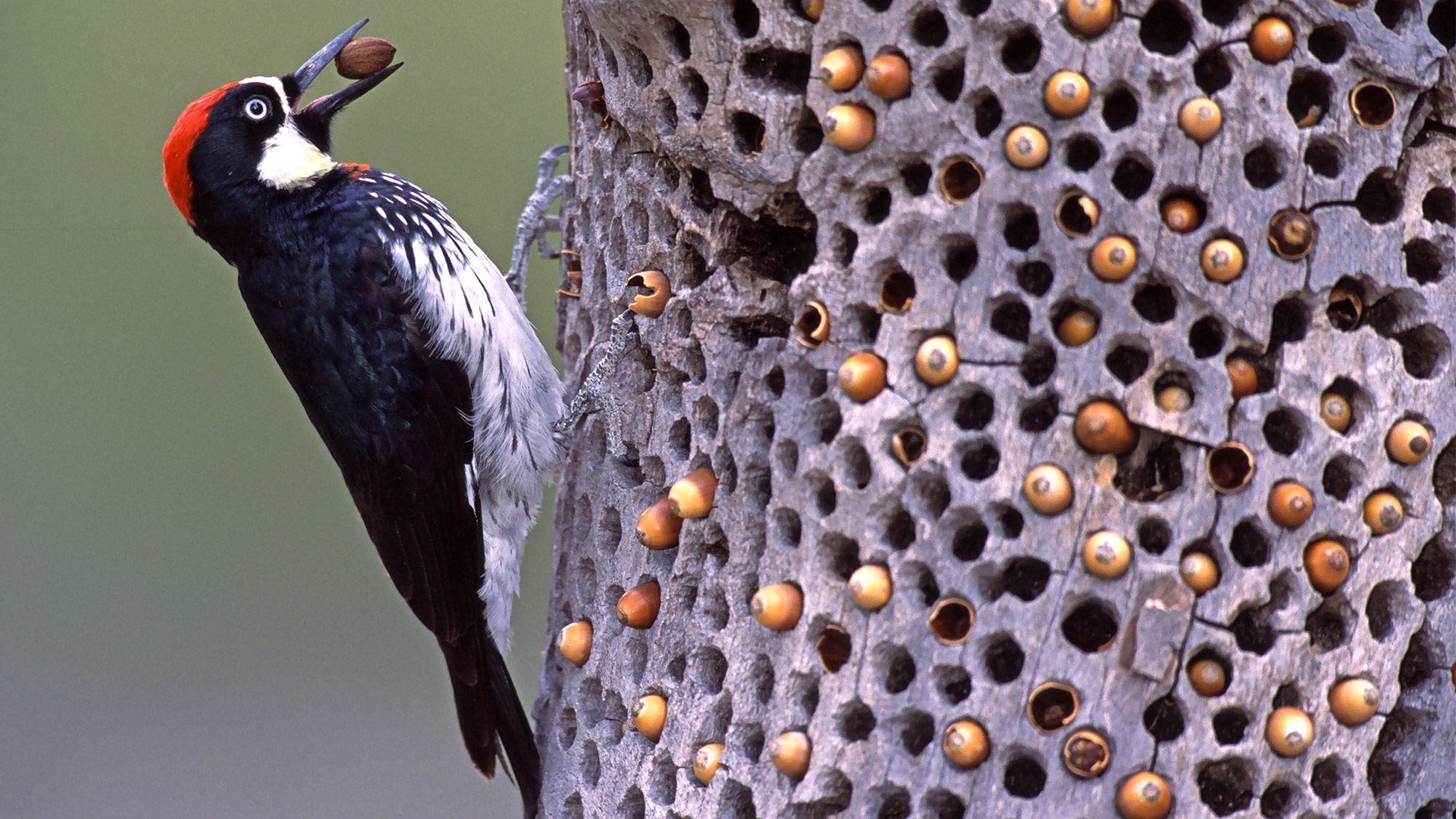Why This Image of a Woodpecker Is Creeping People Out
When a seemingly innocuous image of a woodpecker stashing away its acorn supply made the internet rounds, Twitter-users expressed revulsion. They weren't reacting to the bird or the actual acorns, but to the set of holes in which the bird was storing its treasure. Clustered in an irregular pattern, the holes were triggering a condition called trypophobia.
To someone with this phobia, an otherwise benign – and even downright gorgeous – image can spark fear and disgust. These individuals aren’t just afraid of any hole they see. Trypophobia is characterized by an aversion to clustered patterns of irregular holes or bumps. The term seems to have been coined by someone in an online forum in 2005, though scientists say the condition has likely been around for much longer. [Clowns or Holes: What is Your State Most Afraid of]

"We know that this condition pre-existed the internet — although the internet may have exacerbated it," Arnold Wilkins, a psychologist at the University of Essex, told Live Science.
The phobia isn't an official disorder, meaning it’s not listed in the “Diagnostic and Statistical Manual of Mental Disorders,” but up to 10% of people report experiencing symptoms, which include anxiety, nausea and a “skin-crawling” sensation, Wilkins said, after viewing certain images. "It can be quite debilitating," he added.
So why is this phobia so common? Scientists are still trying to answer this question, but many believe the aversion is evolutionarily adaptive.
"You avoid things that are likely to harm you," Wilkins explained.
In the first ever scientific documentation of trypophobia published in Psychological Science, Wilkins compared trypophobia-triggering images with pictures of poisonous animals, like the blue-ringed octopus. He and his co-authors found a similar distribution of spots, bumps or holes, as well as a similar level of contrast in the images. The researchers concluded that the phobia could stem from an evolutionarily adaptive aversion to poisonous creatures.
Sign up for the Live Science daily newsletter now
Get the world’s most fascinating discoveries delivered straight to your inbox.
However, in a study published in 2018 in the journal Cognition and Emotion, scientists argued that the phobia evolved in response to disease. After all, the clusters of holes look like the lesions, bumps and pustules caused by ancient infectious diseases such as smallpox. That disease alone killed up to 10% of the population in the last millenium — an aversion to infected skin could have given individuals with trypophobia an evolutionary advantage by helping them avoid this deadly illness and others.
Plus, the authors of that study argue, the most common response to a picture of an acorn-dotted tree is not fear, but disgust, which psychologists have called "the disease avoidance emotion." Whereas poisonous predators and disease are both threatening, they trigger two very different reactions. A snake causes fear by activating a person’s sympathetic nervous system — the system that causes to go into fight-or-flight mode. Disease and rotting food cause disgust by activating our parasympathetic nervous system, which causes the body to relax in order to conserve energy.
Research published in 2018 in the journal PeerJ found that participants’ pupils dilated in response to pictures of snakes, but they constricted in response to pictures of holes — a sign of parasympathetic nervous system activation.
Wilkins is uncertain about the disease-avoidance model — he thinks it's likely a part of the puzzle, if not the whole picture. But it could be a while before scientists agree on why exactly people react so strongly to a photo of a harmless woodpecker. Until then, Wilkin said "the jury's out."
- The 27 Oddest Medical Case Reports
- What Really Scares People: Top 10 Phobias
- 13 Common But Silly Superstitions
Originally published on Live Science.

Isobel Whitcomb is a contributing writer for Live Science who covers the environment, animals and health. Her work has appeared in the New York Times, Fatherly, Atlas Obscura, Hakai Magazine and Scholastic's Science World Magazine. Isobel's roots are in science. She studied biology at Scripps College in Claremont, California, while working in two different labs and completing a fellowship at Crater Lake National Park. She completed her master's degree in journalism at NYU's Science, Health, and Environmental Reporting Program. She currently lives in Portland, Oregon.










